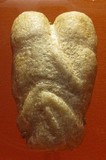Amanda Laoupi: the Pelasgians spiritual substratum of the Bronze Age Mediterranean and circum-Pontic world (4)
The ladies of the Labyrinth
Minos and Pasiphae, Venus, Athena, Hephaistos, Ariadne and Dionysos, as well as the Labyrinth, the Labrys, the Swastika and Rosette, Phaethon, Apollo, Artemis and Asterios had interrelated archaeoastronomical and environmental symbolisms in the Minoan and Bronze Age Mediterranean belief system.
In ancient Greek tradition, Dionysos was the son of the moon goddess Semele (Homer, Iliad XIV.323), who also had 50 daughters, the Menae, who presided over the 50 lunar months (the 50 ‘cows’ that Hermes stole from Apollo; the cycle of 50 moons), half of one octaeteris and one Olympiad (Pausanias, Description of Greece V.1.4). The annual vegetation cycles were, thus, referred to lunar deities who presided over the long calendrical cycles. In the invocation of Dionysos, during the Eleusinian Mysteries (Taylor, 2015: Mystical Hymns of Orpheus, XLII. To Misa), he was adored as twofold, male and female (see also the cases of Athena and Venus cases), related to the Great Mother, Venus and Isis. Dionysos was also strongly related to Ariadne (she was the only ‘official wife’ of the god), the daughter of Minos and Pasiphae (Lyons, 1996). She was put in charge of the Labyrinth and of the sacrifices and rituals offered either to Poseidon or to Athena, depending on the version of the myth. After helping the Athenian hero Theseus, she left Crete with him but later he abandoned her at the Cycladic island of Naxos (where is to be found also an unfinished temple of Apollo aka the Portara among modern locals). There the god Dionysos saw her and dazzled by her beauty made her his bride (the question of her being mortal or a goddess varies in ancient Greek accounts). Her wedding diadem was set in the heavens as the constellation Corona Borealis. The Welsh name for this constellation is Caer Arianrhod, meaning ‘Castle of the goddess Arianrhod’; the word Arianrhod can be translated as ‘silver disk’ or ‘wheel’ according to one version (Bilić, 2006, p. 21). Worth mentioning is also the fact that Ariadne (Areatha in Etruscan) is paired with Dionysos (Fufluns in Etruscan) on an engraved bronze Etruscan mirror-back, accompagnied by Semele (Semla in Etruscan). She was conceived as an orgiastic goddess in all areas of Pelasgic substratum, and her worship included male human sacrifices (Graves, 1948, p. 93).
Let us also be reminded that the initial orientation of the Stonehenge and Carnac megalithic monuments was lunar (Hawkins, 1965). Especially Carnac (France) is located at a unique latitude on Earth, where both the summer and winter solstice sun form a perfect Pythagorean triangle relative to the parallel of Latitude (the East-West equinoctial axis of the site). This proportional 3:4:5 triangle is the first of the Pythagorean triangular set and is expressed in the dimensions of the Crucuno dolmen in Brittany (Thom, 1971; Thom, et al., 1973; Sullivan, 2000). The lunar correlation is also valid for the majority of stone assemblages in Scotland aka “recumbent stone monuments,” consistent with the midsummer fullmoon, as well as for the famous Newgrange in Ireland. Excavations conducted since 2004 and dated to ca 10 kya in the Mesolithic Period, at a field of Crathes Castle, found a series of 12 pits which appear to mimic the phases of the moon and track lunar months, adjusted to the midwinter solstice (Burl, 2000).
Moreover, the twin stone circles and menhir at Cromeleque Dos Almendres (near Guadelupe, municipality of Évora, Portugal) aka ‘the Iberian Mesopotamia’, dated back to 5 kya, offer another intriguing explanation. The maximum declination of the Moon over its 18.6 year cycle (the metonic cycle during which the Moon has 235 Lunations, with an error of only two hours) ranges between two latitudes, Almendres (38˚ 55' N) for 1500 BCE and Stonehenge (51° 18' N) for 2000 BCE, being at its zenith for the viewer passing directly overhead (C. Marciano, http://web.archive.org/web/20060222011844/http://www.crookscape.org/textjul2005/text03.html).
On the other hand, the relationship of Pasiphae/Pasiphaessa (meaning the ‘all-shining’, Pausanias, Description of Greece III.26.1: epithet given to Selene; the moon was called ‘the white wanderer of the Heavens’ by ancient people; related also to the Minoan snake goddess) and the sacrificial bull of Minos seems to be a remnant of the sacred marriage (Koehl, 2001) of the Minoan high priestess and the priest-king (as the earthly representation of the lunar or solar bull). Minos (as a lunar deity) and the relevant title of its priest, after his death, became a judge in the underworld like the much older Mesopotamian myth of the moon god Nanna (Sin), who once in a month acted as a judge in the underworld (Kramer, 1963 & 1972). Archaeoastronomical and archaeological evidence support the existence of a Minoan lunisolar calendar based on the 99 synodic periods of the moon, the eight-year lunar cycle (Blomberg and Henriksson, 1996 & 2001; Ridderstad, 2009).
Since early prehistory, the Moon had played a role unimaginable to us today (Lombard, 2005), as it was considered also to be a regulating power, forecasting the weather and its disturbances, the energy released by lightings and thunderstorms (the Minoan/Kolchian Medea and the Libyan Medusa). The moon god/goddess had their own chariot (e.g. Medea flies off into the sky drawn by two dragons). And Medusa gave birth to the winged horse Pegasus (white horse).
The name Medusa, meaning ‘sovereign female wisdom’, was found in Sanskrit (Medha), in ancient Greek (Metis) and in ancient Egyptian (Met or Maat). She was the serpent-goddess, worshipped by the Libyan Amazons (Perseus’ deed took place in lake Tritonis, too) and symbolized the destructive aspect of the Great Triple Goddess aka Neith, Anath, Athene in North Africa and Athana in palatial Minoan Crete, and Metis-Athena-Medusa in later Greece (see the dark aspect of Athena as Medusa and Metis from the Archaic Period onward, so that the two were overlaid, Metis became her mother and Medusa her enemy and later protector). She represents the union of Heaven and Earth. She is the purifier and the destroyer in order to recreate balance. Her primitive power is represented in many female-oriented symbolisms like the gorgoneion, the labyrinth, and other vaginal/uterine designs. Her ceremonial mask reflected the divine essence of female nature (Walker, 1988; Gimbutas, 1991; Marler, 2002). The above-mentioned triad is similar to the triad Artemis-Selene-Hecate, and Medusa/gorgons have been related to the death aspect of Nature and Hecate (Kerenyi, 1951, p.48), a symbolic similarity shared by the goddess Kali. In fact, from the 5th century BCE onwards, Medusa, Hecate and Artemis were equated to lunar goddesses (Burkert, 1998, p. 171). The same motif of the sacred female triad (Creatrix–Ancestral Mother–Mistress of Nature) is broadly detected in Eurasian cultures, e.g. since the Siberian Palaeolithic (Marler, 2007, pp. 64-66).
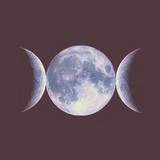
Robert Graves (1969) interpreted the double-axe (labrys) as the symbol of the Moon
Related to the great goddesses, with the two curved edges
Indicating the waxing and waning phases on either side of a full moon
Artemis has been considered (Farnell, 1896; Harrod, 1975), also, to be an expressive form of the matriarchal, chthonic, orgiastic Mother Goddess in the Minoan triptych Britomartis (Diodorus of Sicily, V.76.3; Strabo, X.4.12; Pausanias, VIII.2.4; Harrod, 1975, p. 52: the nymph was pared with the god [Zeus] Aristaios) – Diktynna (Herodotus, Historiae III.59; Euripides, Hippolytus 145-150 & 1127-1130; Euripides, Iphigenia in Tauris 126-127; Aristophanes, Wasps 367-368 & Frogs 1355-1362: Artemis Diktynna; Kallimachos, Hymn to Artemis 3.189-203) - Aphaia (Pausanias, II.30.3 & III.14.2; Antoninus Liberalis, XXXIV).
On the other hand, the mythological cycle of Perseus, the brave son of Zeus and Danaë, includes also the king of Aethiopia, Cepheus – one of the Argonauts (its star γ Cephei will become the pole star again between 3000 and 5200 CE), his wife, queen Cassiopeia (her constellation is circumpolar for the northern latitudes) and her daughter, Princess Andromeda aka the Chained Maiden (her constellation is next to Pegasus). After Perseus’ victory against the monster, Perseus and Andromeda became a couple and after their death goddess Athena granted them an honored place in Heavens. Especially the star β Persei aka Algol is notorious as it represents Medusa’ head (its Arabic name, Al Ghul, means ‘the demon’) and it is considered unlucky (for Algol representing Horus in ancient Egypt, see Jetsu and Porceddu, 2015). Astronomically speaking, famous examples of binaries are Algol (an eclipsing binary), Sirius, and Cygnus X-1 (of which one member is probably a black hole).
In Sanskrit, the Goddess Durga (the inaccessible) is considered as the mother of the Universe and believed to be the power behind the creation, preservation, and destruction of the world. Like Shiva, she is also referred to as ‘Triyambake’ (the three eyed Goddess), the left eye representing desire (the moon), the right eye representing action (the sun), and the central eye knowledge (fire). Her vehicle is the Lion and its symbols (weapons) are the conch shell, the bow with arrows, the thunderbolt, the lotus, the sword, the trident and the Sudarshan-Chakra. She is ‘chandra’ (white light). In Hindu tradition, she was the warrior goddess, who was created to fight the demon Mahishasura. Rambha, king of the demons, was once in love with a water buffalo. Out of this union, Mahishasura (the bull demon) was born, having the ability to change between buffalo and human (amazing similarities with the Minoan Minotaur myth). Defeating all humans and all gods, he unleashed a reign of terror upon Earth, Heaven and the Netherworld. But in the end, the goddess slayed the demon.
According to another version of the Minotaur saga, Pasiphae made offerings to Aphrodite (Hyginus, Fabulae 40), which may reflect her connection to Venus, as both the Moon and Venus have an eight-year cycle). Although the rosette seems to be a very old symbol, being already present in megalithic art (Cope, 2004, p. 241), later on symbolizing the sun in many cultures, its earliest certain meaning is found in Mesopotamia, where the eight-pointed rosette was the symbol of planet Venus; the 8-year cycle of Venus is also traced in the legend of the betrayed lovers of goddess Ištar in Gilgameš Epic (van Buren, 1939 & 1945; Soltysiak, 2003). Enjoy the astonishing cosmic dance of Venus in spirographs online
https://www.youtube.com/watch?v=4cg NUhtmHM https://www.youtube.com/watch?v=_aocKBYyjM0
https://www. youtube.com/watch?v=u8ZQpv2a_Aw
Moreover, goddess Aphrodite was the patroness of opium poppies both in Mesopotamia and in Minoan Crete (where it is believed that opium was produced for religious, shamanic and spiritual use). There is also an intriguing topic concerning the use of psychoactive substances and entheogens in ancient Mysteries such as the Eleusinian (Wasson, et al., 1978; Kerényi, 1991; McKenna, 1993; Berlant, 2005; Bowden, 2010; Kilbourne Matossian, 2013).
Another intriguing hypothesis has been made by the Greek Professor of Space Physics, Minas Tsikritsis, who suggested at the 21st International Conference of SEAC (Societe Européenne pour l’Astronomie dans la Culture) in 2013 that the famous frying-pans of the Cycladic civilization were used not only as calendars to perform astronomical calculations of the orbits of Venus, Jupiter, Mars and Sun (proving that since the Neolithic era the inhabitants of ancient Greece knew that the Earth requires 365 days to make a complete circuit around the Sun, and that Venus needs 584 and Jupiter 399), but also as pregnancy calendars (Tsikritsis, et al., 2015). These frying-pans were among the most characteristic items of the Early Cycladic II period (ca 2700-2300 BCE) aka Keros-Syros cultures (for the controversial but highly important sanctuary at Keros see: Broodband, 2002; Renfrew, et al., 2012). Moreover, this scholar recognizes Orion and Sirius on Minoan seals and makes interesting suggestions about the etymology of ‘labrys’ and the symbolism of the Delphic Epsilon (Tsikritsis, 2011).
Two other versions hold precious information, as well. In a kylix by the painter Aison (ca 425 – 410 BCE), the hero Theseus drags the Minotaur from a temple-like labyrinth, helped by the goddess Athena. Finally, there was an ancient cult of Aphrodite Ariadne (ariadne = extremely pure/hagne, as an epithet of the goddess; Kerényi, 1976: the epithet ‘utterly pure’ was attached preeminently to Persephone, the queen of the underworld, although other goddesses also were termed ‘hagne’) at Amathus of Cyprus (second most important Cypriote cult centre of Aphrodite), according to the obscure Hellenistic mythographer Paeon of Amathus, whose works are lost, but his narrative is among the sources cited by Plutarch in his Vita of Theseus (20.3-.5). The sacred grove in which the shrine was located was called the grove of Aphrodite Ariadne (Homer, Odyssey xi.320; Hesiod, Theogony 947; Apollonius' Argonautica iii.997; Hyginus Fabulae, 224; Diodorus Siculus iv. 61, v. 51; Pausanias, i. 20.2, ix. 40.2, x. 29. 2; Kerenyi, 1976; Barthes, 1981, quotes Nietzsche, "A labyrinthine man never seeks the truth, but only his Ariadne" using Ariadne as a symbol of his recently deceased mother). Moreover, modern scholars propose that the cult of the Minoan snake goddess who is identified with Ariadne was similar to the cult of Astarte (Astarte's most common symbol was the crescent moon or horns) and that her cult as Aphrodite was transmitted to Cythera and then to Greece (Wunderlich, 1987, p. 134; Powell, 1998, p. 368). Aridela and Ariadne could be sacral invocations to Aphrodite/Venus meaning ‘very sacred one’, ‘very visible/bright one’ (Persson, 1942; Nilsson, 1950). There was also a cult of Ariadne in Attica. And the tradition of her being the mother protector of Tauropolis suggests her connection with Artemis Tauropolos (Condos, 1997, p. 87 ff).
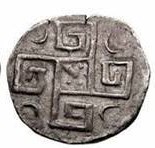
431-350 BCE (After Bilić, 2006, p. 43)
Moreover, the interrelation of the labrys/labyrinth (see next chapter) with the element of water and Aphrodite (called also ‘Wanassa’ in Cyprus, a Mycenaean title) as its main goddess is also reinforced by the following observations. Astarte meant ‘she of the womb’ in Canaanite and Hebrew. When the Hebrews turned from goddess-worship to a religion centered on the male Yahweh (or Jehovah), her name Athtarath was deliberately mis-rendered as Ashtoreth (‘shameful thing’) and confused with Asherah. She was depicted variously as a death-dealing virgin warrior, a life-giving mother, and a wanton of unbridled sexuality, her emblems being the Moon and the morning and evening stars (the planet Venus). Although Asherah or Athirat (‘Lady Asherah of the Sea’, ‘goddess of the tides’, ‘She who walks in the Sea’, ‘she who gives birth’, ‘wet-nurse of the gods’ in Canaanite and Hebrew) was a long time alternate form of the elder Sea Goddess, and a life-death-rebirth deity, Astarte was the major goddess in Phoenician religion, mainly in Sidon and Canaan, which were among the most important sea faring trade nations in the Bronze Age Mediterranean. In ancient Egypt, Isis represented the spirit of the all-important Nile, a water goddess like Aphrodite Anadyomene (‘blue Venus’, or ‘Venus rising’). Respectively, ancient Egyptian images of women holding the ankh (‘Key of Life’ carried by the goddesses Isis and Hathor) and associated with the sea are symbolizing the force of female creation. Moreover, in the astromythology of Eastern Mediterranean, female creatures were associated with water symbolism. Isis’ worship was performed near waters (Pararas and Laoupi, 2007). Isis/Ishtar/Aphrodite (related to Adonis) are all known examples of mourning, thus Venus was called the ‘mourning star’. Initially she was also called Aphrodite Dionaia by the Pelasgians, who inhabited the sacred land of Dodona, and she was the alter ego of Zeus (Dias/Dione) with her strongest presence both in cult and oracle rituals.
Additionally, archaeoastronomical and archaeological evidence suggest that the Minoans were aware of the Venusian synodic octaeteris (Blomberg and Henriksson, 1996 & 2005), as well as of the lunar octaeteris, but, since they both shift, they had to use the Sun or a notable star (brighter than 1.0 mag and visible in Crete) for calibration. This star was Spica (in the constellation of Virgo), the heliacal rising of which happened nearest to the autumn Equinox and was celebrated during an important festival that later was transformed into the Eleusinian mysteries.
In ancient Greek lore (Allen, 1963, pp. 460- 463), Virgo represented the virgin Persephone and Venus was associated with the great mother goddesses (Ishtar, Kybele, Demeter, Isis). Mother and daughter seem to have originated from the Minoan spiritual substratum and beyond (Rich, 1976; Woodman, 1985; Castleden, 1990; Owens, 1996). One orientation of the Throne Room at the Knossos palace was to the heliacal rising of Spica and the time of the grape harvest to Dionysos, as well as the orientation to "the times of the dead" (correlated to the resurrecting vegetation goddess Persephone), seen also in the orientations of the Messara tholos tombs (Goodison, 2001), and the central court of Gournia (for a very interesting and tought-provoking study of Persephone by the Greek archaeologist & historian Haris Koutelakis, see https://www.academia.edu/29117037/THE_ETRUSCAN_PHERSU _PERSEPHONE_PHERSALA_IN_THESSALY_THE_LAKE_PRESPA_MINERS_OPIUM_AND_THE_ELEUSINIAN_MYSTERIES).
Another interconnection is also intriguing and beyond doubt. The classical festival of Thesmophoria, dedicated to Demeter, was celebrated about one lunar month after the Eleusinian mysteries. Hesperos (evening Venus) appeared before the event. Thus, researchers conclude that: a) Minoans honoured Demeter as the great goddess probably associated with the equinoxes and the start of the octaeteris, and b) Persephone as a chthonic deity was more closely connected to the invisibility periods and subsequent 'resurrections' of Venus, Spica and the Moon (during its 584-day synodic period, Venus appears as a morning star for 263 days, disappears for 50 days, appears again as an evening star for another 263 days, and disappears for 8 days).
This created two expressions of Persephone, the chthonic and the celestial one, worshiped separately, as the Hittites did (as two aspects of the same great goddess: the sun goddess Arinna and Hepat (Akurgal 1962, pp. 75-81; Ridderstad, 2009). Scholars are of the opinion that Arinna could be related to Ariadne, the lady of the Knossian Labyrinth, and wife of Dionysos (Homer, Odyssey xi.320-5; Hesiod, Theogony 947-949; Hyginus, Fabulae 42).
But was the original ‘Lady of the Labyrinth’ the great goddess worshiped at Knossos, the a-ta-na poti- ni-ja of the Knossian Mycenaeans (potnia meaning mistress; Chadwick, 1958, p. 125)? Hicks (2002) argued that a-ta-na is related to the Luwian astanus (the sun), and to the later Greek Athena. The Etruscan Menrva of Menrfa, a symbolization of early morning or late evening sun light and goddess of Healing as well, was venerated in her Portonaccio temple-sanctuary at Veii as a triad among Turan/Aphrodite & Artimi/Artemis. Other researchers connect her with the Indian word ‘ahana’ meaning the dawn. For her qualities and her strong parallels with Indian theology, Athena was considered the virgin sister of Apollo. Reynold Higgins (1981) notes that double-axes were votive items to the goddess Athena in 15th century BCE.
Marija Gimbutas (1989, p. 190 ff) illustrated several prehistoric labyrinthine motifs, such as those engraved on a stela from an Irish passage grave (County Meath) dated to 4th millennium BCE, contrived to also represent the image of an owl, a sacred and beloved bird of the goddess Athena, too, known as the nocturnal weaver. The owl seems to have been an incarnate manifestation of the fearsome Goddess of Death. For example, the Goddess' owl face on a very fine sculpture discovered at Knowth West, Ireland, is immersed in a labyrinthine design probably symbolizing the life-giving waters, in the center of which is a vulva.
In addition, Athena was the weaver goddess among the Olympians and her peplos, as well as her connection with spiders and snakes, remind us of Ariadne and her thread (Hillis Miller, 1992). Perhaps Ariadne with her thread, who weaved the world with strands of Love, was another name for Arachne, the spider goddess (also associated with the Celtic goddess Arianrhod). Arachne was a lunar symbol and it was perhaps included in the zodiac cycle of a lunar year of 13 months. It was placed between 25° 23' Taurus and 23° 5' Gemini and its symbol was a circle with a cross at the centre, a common symbol for the Earth (Vogh, 1977). Vogh, though, was accused of a scientific hoax (even if the powerful presence of the symbol of the spider in astrological and cultural patterns all over the world is undeniable) so that, usually, Ophiuchus - the Serpent Bearer - is considered to be the 13th constellation which was better known in Classical times as Asclepius, the Healer.
Universally, the symbol of the spider is related to some attributes like Cunning, Progressive, Female, Cyclical, Rebirth, Death, Crafty, Resourceful, Creation, Protection and Fate. It is the teacher, the protector of esoteric wisdom, celebrated by several cultures worldwide. It represents Fertility and Balance; it is included among the famous Nazca Lines - Nazca desert, southern Peru, a UNESCO World Heritage Site designated in 1994 (for an astronomical calendrical interpretation of the lines, see Stokes Brown, 2012; Foerster, 2013) - and could be interrelated with the Equinoxes. Another strong correlation of the Nazca spider is constellation of Orion, with its abnormally long leg (at the right, as seen from the viewer) ending at Sirius. The German born Maria Reiche first attracted the world’s attention to the amazing Nazca drawings, spending more than 50 years of her life on the study of the area. The American historian/archaeologist Paul Kosok, from Long Island University, collaborated with her and made, too, an interesting discovery, that some lines represented the summer and winter solstices, along with the drawings that seemed to be related with celestial objects, events and constellations. Moreover, astronomer Phyllis Pitluga of the Adler Planetarium in Chicago deepened the research, claiming that those drawings represent heavenly bodies. Especially, the original Nazca drawings - the 500ft animals - such as the spider, seem to be correlated exactly with the movements of Orion throughout earliest prehistory. Her theory though was criticized by other astronomers (Kosok, 1965; Reinhard, 1996; Critchlow, et al., 2005; Aveni, 2006; Brown, 2007; Haughton, 2007). Finally, Graham Hancock, in his Fingerprints of the Gods part II (1996), mentions the astronomer Gerald Stanley Hawkins, best known as the author of Stonehenge Decoded, who identified the Nazca spider as a member of the Order Ricinulei, describing it as “one of the rarest spider genera in the world”.
In the Vedas, the net of Indra (depicted as a chariot driver) symbolized the continuous creation and interconnectedness of Universe (according to Rajiv Malhotra, 2014, the earliest reference to a net belonging to Indra is found in the Atharva Veda, 8.8.6 ff, dated to ca 1000 BCE) and there was some lore that the net was used in bull ceremonies in Atlantis (Plato, Critias 119C-120D).
Furthermore, one of proto-hellenic titles of Aphrodite was ‘Arachne’ or ‘Ananke’, symbolizing the Fate and the thread of Life (Perry, 2013). So, was Venus the Lady of the Labyrinth? In fact, the conjuctions of Venus have a pentagramic cyclic pattern, creating a five-pointed star. But, in Theseus’ mythological cycle, although Ariadne-Aphrodite helped the hero to conquer the beast, when he returned victorious to his homeland, the city of Athens, it instituted festivals in honor of Athena.
Finally, Artemis, according to the Pelasgian Arcadians, was not the daughter of Leto and Zeus, but of Demeter and Poseidon as king of the Underworld (Pausanias, VIII.25.7 & VIII.42.1; Dietriech, 2004, pp. 65-66) under the secret name of Despoina, Despoena or Despoine (the other daughter was Persephone aka Kore), worshipped in their mystical ceremonies known as Arcadian Mysteries (similar to Eleusinian Mysteries). Her real name was revealed only to those who were initiated in those mysteries (Pausanias, VIII.37). Of course, Despoina was an epithet attributed to several goddesses, especially Aphrodite, Persephone, Demeter and Hecate. As an epithet, the word Despoina is related to the Mycenean divine title ‘potnia’ (po-ti-ni-ja), and it was originally accompanying the Aegean mother goddess. The Pelasgian Arcadian goddesses Demeter and Despoina (later Persephone) were closely related to springs and animals, as well as to the cycle of life-death-rebirth, and, especially, to the goddess Artemis as ‘Potnia Theron’ (meaning the mistress of the animals) who was the first nymph (Nilsson, 1967, vol. I, pp. 479-480). Kerényi (1976, I.iii, pp. 89-90) proposed that the later Eleusinian Mysteries related to Demeter and Persephone were the continuation of Minoan cults and rites worshipping the Mistress of the Labyrinth at Knossos (Kn Gg 702 tablet: da-pu2-ri-to-jo,po-ti-ni-ja).
On a marble relief found at her sanctuary in Lycosura, a Pelasgian city in Arcadia said to be the most ancient in the world, according to Pausanias (VIII.2.1, VIII.38.1 & VIII.4.1-5), and the centre of her mysteries, the veil of chthonic Despoina is represented (National Archaeological Museum of Athens, inv. no. 1737); figures with the heads of different animals obviously in a ritual dance, some of them holding a flute, appear on it. These could be hybrid creatures or a procession of women with animal masks (Pausanias, VIII.25.4, VIII.37 &VIII.42; Nilsson, vol I, p.479)
The goddess was already present in the Homeric Epics, she held a prominent role in the attic ceremonies close to the sea, as the Temple of Artemis Mounichia at Peiraieus, and the first open-air sanctuary on Sounion promontory (before the erection of the temples of Poseidon and Athena), are revealing. Artemis had, moreover, a special power over water. As the goddess of the Moon (according to her later attributes), she ruled the tides. In this respect, she was associated with the cyclical pattern of menstruation, and thereby forming another link between women and water. In addition, through her association with water, she also personified ‘the unconscious depths of the human mind’. And, like water, women are also the source from which all life flows (Pararas and Laoupi, 2007). Later on, the remembrance of Neolithic matriarchal societies, of the cult of Artemis’s and the lore of the Amazons, was quite strong (according to Callimachus, Hymn 3.237-242, the women warriors set up the goddess’ statue beneath an oak tree and danced around it dressed in their armor) in the case of Ephesus (Asia Minor), a rich and brilliant ancient city, where women enjoyed rights and privileges equal to men, and there are records of female artists, sculptors, painters and teachers in historic times (MacLean Rogers, 2012).
After the final Trojan War, Aeneas had led many of the survivors from Troy to Latium, where he married the Latin princess Lavinia, their royal residence being at the new town of Lavinium. Here it is believed that Prince Brutus (Bryttos), the great-grandson of Aeneas, was born. In his travels, he visited the sacred oracle of Artemis on the island of Delos, where he learned about his future destination and destiny (Monmouth, 1965). Later on Brutus, along with Trojan refugees and fellow arrivals, went to Britain, where he became the first high king. Strabo wrote that “…there is an island near Britain on which sacrifices are performed like those sacrifices in Samothrace that have to do with Demeter and Core” (IV.4.6). Additionally, the worship of goddess Dana (Diana, Artemis) was always prominent amongst the Celts of Britain, Gaul and Ireland. The Thracian deity Bendis was also worshipped in Classical Attica (the resemblance of which with Artemis was more than striking), where she eventually became one of the most popular foreign deities. The depictions of her on vases included the notion of ‘Kourotrophos’ and of ‘Great Mother,’ and sometimes the goddess was represented holding a vessel to catch the blood of sacrificed bulls. She was also identified with ‘Potnia Theron’, Kybele, Parthenos Athena and Hecate (Janouchova, 2013). Probably, thus, the broader area of ancient Thrace was one of the Pelasgian nuclei of those rituals and religious beliefs.
The symbols of the Labyrinth and Labrys
Homer (Odyssey, xix.172-178) calls Crete a land of many peoples, Achaeans, great-hearted native Cretans, Kydonians, Dorians and goodly Pelasgians (King, et al., 2008). On the other hand, information derived from ancient sources (Diodorus, III. 67.1) connects the cultural group of Kadmos with the Pelasgian roots of the first alphabet signs. Diodorus of Sicily mentions that the ‘Phoenician Letters’ were Pelasgian, and that later Greeks ignored that Minoans were the first who created the Hellenic alphabet. He writes that “Now Linus, they say, composed an account in the Pelasgic letters of the deeds of the first Dionysus, and of the other mythical legends, and left them among his memoirs” (III.67; V.57).
One of the most intriguing clues connecting Pelasgian Crete and other Mediterranean areas with the Pelasgian substratum, e.g. Egypt (Herodotus, II.148, wrote about the marvellous labyrinth at Hawara in the Fayum, near the Middle Kingdom capital of Lisht in Egypt, that: “The Pyramids were bigger than words can tell, but the Labyrinth surpasses even the Pyramids"), Lemnos (with its Pelasgian city state of Hephaistia where the modern archaeological excavations bring to light astonishing finds, and the Sanctuary of Cabeiri, the second on the Greek territory after the famous one in Samothrace), and Etruria (Matthews, 1985), consists of the famous labyrinth being an elaborate, complex system of path and tunnels (Mycenaean ‘daburinthos’ da-pu2-ri-to-yo KN Gg 702). Apart from a great number of scientific works worldwide trying to decipher this symbol, a few aspects appear to be fascinating, and much interrelated.
The fabled Labyrinth of Minos on Crete is believed to be the remains of the Bronze Age royal palace-city of Knossos (Philostratus, De vita Apollonii Tyanei IV.34). Legend says that King Minos of Knossos demanded from the Athenians a tribute every nine years of seven young men and seven maidens, who were then "destroyed by the Minotaur in the Labyrinth, or else wandered about at their own will and, being unable to find an exit, perished there" (Plutarch, Lives: Theseus XV.2, XVII.3 & XIX.1). On the legend of the Minotaur and the cause for the existence of the Labyrinth, Diodorus explains that “Daidalos built the Labyrinth, with winding passageways that were very difficult to follow for those unacquainted with them…” (IV.76.1- 80.3). This Daedalus was Athenian by birth, at the end finding himself in Sicily.
There is striking evidence, also, in the name of Asterion, son of Cometes, who was among the Argonauts (Apollonius, 1.35-39; Orpheus Argonautica, 163; Hyginus Fabulae, 14). Asterion or Asterios (ruler of the stars) who was called king of Crete (Herodotus, 1.173; Apollodorus, The Library 3.1.7 & 3.8-11; Nonnus, Dionysiaca XL.290 ff: “He [the Kretan prince Asterios] avoided the Knossian city and the sons of his family, hating Pasiphae and his own father Minos”), raised the children of Europa and Zeus the Bull as his own (Diodorus Siculus, The Library 4.60.3), taking the form of the bull (Sun). According to Karl Kerenyi (1951) and other scholars, the star at the centre of the labyrinth on Cretan coins was Asterion, the Minotaur (Diodorus of Sicily, IV.60-77). Today, this is the name of the star b Canes Venatici. Thus, Zeus/Asterion was transformed into the starry bull and became the father of Minos by Europe, and Poseidon/the Bull became the father of Asterion the Minotaur (during the Old Palace Period, ca 2000 BCE, the Taurus constellation occupied the position of the Vernal Equinox, signalling the beginning of the seasonal year).
The Epic of Gilgamesh, among the earliest surviving works of literature, was discovered by Hormuzd Rassam, a native Assyrian Assyriologist, British diplomat and traveller, in AD 1853.
The epic begins with the five old Sumerian poems, usually dated to the period 2150-2000 BCE (then came the ‘standard’ Akkadian version which consists of 12 tablets), and was edited by Sin-liqe-unninni sometime between 1300 and 1000 BCE, later found in the library of Ashurbanipal in Nineveh. In tablet VI, we learn that Ishtar, the ‘Queen of Heaven’, in order to revenge Gilgamesh, leads the Bull of Heaven to Uruk, causing widespread devastation, as it lowers the level of the Euphrates River, dries up the marshes, and opens up huge pits that swallow 300 men! One can see the very stimulating combination of the ancient Greek myths of the Minotaur and of Phaethon (see also Rohl, 1998). Moreover, the double-axe, the bull-head, doves, and priestesses were common features in both Sumerian and Minoan cultures (Castleden, 1990; Roux, 1992).
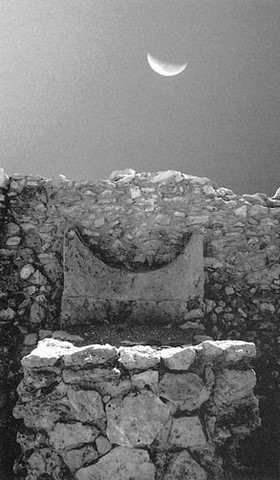
Altar of Sin or Suen (Akkadian) / Nanna (Sumerian), Temple of the Moon. Dilmun, Bahrain. Rohl, 1998, plate 34. The Sumerians described Dilmun as a paradise garden in the Epic of Gilgamesh, Used as an inspiration for the Garden of Eden story (After Conklin, 1998, p. 10)
On the other hand, poetically, the comets are like sky dancers. And the Cretan labyrinth had been a dancing ground made for Ariadne rather than for Minos (Homer Iliad, XVIII.590 - 593). “Homer compares the dance worked by Hephaistos on the shield of Achilleus to a dance made by Daidalos, because he had never seen more clever workmanship” (Pausanias, 8.16.3). “Dancers as sacred extra-human models revealed the divinity, for example the pyrrhic, the martial dance created by Athena, or the heroes, cf. Theseus’ dance in the Labyrinth... A dance always imitates an archetypal gesture or commemorates a mythical moment” (Eliade, 1954/1965, pp. 28-29). Graves (1969) claims that Hephaestus had affinities with Daedalus and Icarus. Finally, the symbol of the coiling serpent seems to dance in a labyrinhtine way, in a cosmic spiral (Valentia Straiton, 1927). Researchers claim that at the center of Phaistos Disc (Maze of Daedalus: the two sides along represent the wave spiral) lays the symbol of Sirius and that the famous disc represents in fact a dance floor (http://www.diskoftheworld.com/diskindex.htm#dance) according to the patterns of ‘Kronou Teknophagia’ or the ‘Crane Dance’ known as geranos, an ancient dance said to have been invented by Theseus and performed on the island of Delos in order to commemorate his means of escape from the Minotaur inside the Labyrinth (Polydeucus, IV.101). This ancient dance was later known also on Paros & Mykonos islands and on the Greek mainland as labyrinthos, or Theseus’ dance, or tsakonikos, from the homonym area in Peloponnesus (Lawler Brady, 1946; Graves, 1948; Herdeen, 2011).
By the 5th century BCE, the city of Knossos began to mint coins, and the earliest shows the Minotaur on the obverse and a labyrinthine swastika with a star or sun motif in the centre on the reverse. Over time, the swastika gave way to the maze pattern and a human or bovine head replaced the central star (MacGillivray, 2004).
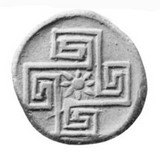
Silver Cnossian coin depicting the Labyrinth as a swastika with the star/rosetta at the center. ca 432–350 BCE (BMC Crete and the Aegean Islands: plate IV.11; After Saward, 2003).

The lauburu (round swastika) of Basque and Celtic people symbolizing - in its positive form - spirit, life, consciousness and prosperity; it also marked the tombs of healers of animals and healers of souls
Pliny the Elder, in his Natural History (XXXVI. 13), speaks of a remarkable labyrinth in Lemnos, which has not been identified in modern times. Apollodorus (Epitome, I.9) records that when Dionysos found Ariadne abandoned on Naxos, he brought her to Lemnos and there fathered Thoas, Staphylus, Oenopion, and Peparethus. Though called the Lemnian Labyrinth in this section, Pliny previously refers to this Labyrinth as the temple built by Theodorus at Samos (XXXIV.83, XXXV.19, 82 & XXXVI.90). This misinterpretation, though, derives from the fact that Samos was the old name of Samothrace, as the Homeric tradition passed into the verses of Apollonius’ Argonautica (I.923) and Diodorus (III.55.8). Does Diodorus’ narration (V.47.1 ff.) relate to the flood that affected the northeastern Aegean, Asia Minor and the Black Sea (Ryan and Pittman, 2000; Ryan, et al., 2003)?
Scientists date a major episode in 5.600 BCE, when the salt waters of the Aegean poured into the brackish waters of Black Sea), correlating the island of Samothrace, the flood episode, the very ancient nuclei of Eastern Mediterranean cultural substratum, and the fishermen’ altars near the shores, in an excellent and highly valuable framework of environmental information. In the ancient text, the flood is expressed by the term ‘labros’, a Homeric word that means the impetuous waters of the sea or the rivers!
Recent archaeological, theological, and natural research, has brought forward new hypotheses about the origins of the labyrinth, and that the forces of an ancient tsunami (seaquakes) may have played a special part in the labyrinth’ history. The earliest examples for which an accurate date can be ascribed are to be found around the shores of the Mediterranean. A labyrinth-inscribed clay tablet from Pylos, Greece, is over 3200 years old. The depiction of the labyrinth on a wine jar from Tragliatella dates to the 7th century BCE; it shows armed soldiers on horseback running from a labyrinth with the word Truia (Troy) inscribed in the outermost circuit (http://www.labyrinthos.net/centre.htm).
It is believed that the concept of the labyrinth was developed from the spiral – a fundamental form found in nature in the nautilus shell, the turn of a ram's horn, the manner in which snakes coil and birds spiral up to ride thermals. Moreover, spiral galaxies and strands of DNA are now visible to modern people using telescopes and microscopes. Ancient people attributed the spiral to the Great Mother Goddess. As a symbol representing energy and transformation, it was painted on cave walls and on pottery throughout southeastern Europe, as well as on the walls of the Tarxien temples of Malta. Additionally to the spiral, the labyrinth encompasses other powerful symbols, too: the circle, the meander and the labrys, from which it gets its name. Like the spiral, the circle is a fundamental form of nature. It is the Earth, the Moon and the Sun. It is the return of the seasons and the wheel of life. It represents time and timelessness, completion, unity and equality (Pararas and Laoupi, 2007).
There are remarkable examples of labyrinths from a whole range of ancient and disparate cultures, dated back at least to 30 kya. “In its earliest use, the labyrinth seems always to have been associated with death” (Bord, 1976, p. 10; Lorimer, 2009). The symbol has appeared in all forms, throughout most parts of the world (Europe, Mesoamerica, Mediterranean, Java Australia, India and Nepal). Since ancient times, people have used labyrinths to invoke the mercy of the Gods in their dealings with the sea. At the shores of Iceland and the Baltic Sea, there are still many old labyrinths that were once used by fishing communities as indicators of the directions of the winds, and as shrines to the old sea Goddesses which would protect the fishers for a safe return home (Saward and Saward, 1998; Saward, 2003). Legends tell how labyrinths near lakes and sea sides have also been used as a place to guide the souls of the deceased to the hereafter. Moreover, the name of troy-town has been discovered for several locations in northern Europe (Spanuth, 1975; de Grazia, 2005). Labyrinths appear in various countries throughout the world (India, England, Scotland, and the Hebrides), as a form of spiritual protection against the ‘evil eye’. This protective aspect was also reflected upon the planning of prehistoric cities, in order to offer tactical protection from military invasion, as in the case of Troy, which was constructed in a maze-like configuration (Bord, 1976; Freitas, 1985, p. 413).
Labyrinths remains, also, since early prehistory, a pristine and amazingly strong archetypal symbol of the trip to our Inner Self and our delving into the Unconscious (Campbell, 1972; Edinger and Wesley, 1994; MacGillivray, 2004; Bilić, 2006, p. 20). In its duality, it is Cosmos to those who know the way, and Chaos to those who lose it. Ariadne represents “the anima as psychopomp”, without which Theseus would not be able to slay the ferocious Minotaur (Adams, 2001, p. 263). It is Ariadne's thread, whose windings create the world and yet enable us to unravel it or ravel it (Purce, 1974, p. 29).
This symbolic ‘conjunctio oppositorum’ (see the “androgynous” nature of Hephaistos, Venus, Dionysos and Athena) is the place where opposites such as Life/Death, Light/Dark, Male/Female, are transformed and melt into each other, in the dance of the spiral (Freitas, 1985, p. 413). The hero Theseus faces every human being’s fate in the form of the three-level initiation (ego death). The bull and the labyrinth symbolized matriarchal societies, the chthonic female priesthood, and the energy and forces of the Moon (as female expression). Furthermore, the Minotaur was called Asterion (starry), symbolizing both the light of awareness once conquered, and Amor Fati, “the acceptance and love of one’s fate” (Adams, 2001, p. 385), as the acceptance of one’s karmic path. And, since “Minotaur is brave enough to bear his fate by standing within the internal labyrinth, then it is up to the hero to venture in and meet him there, finding his way to freedom after meeting and slaying the monster” (Campbell, 1972, p. 17). Finally, there is the union of the two archetypal images of Male and Female, Dionysos symbolizing Zoë and Ariadne symbolizing the Genesis of Souls, both representing the eternal spiral of Life (Kerényi, 1976). According to Universal Vortical Singularity Theory (UVS) by Vincent Wee-Foo (http://www.uvs-model.com/UVS%20content.htm), all physical existences (e.g. dark matter blobs, supervoids, galaxies and their structures and motion, blackholes and supernovae, the heliosphere and the magnetosphere, sunspots, planetary rings, comet gas tails, polar aurorae, the ozone hole and polar vortex, polar jetstreams, supercells and tropical cyclones, oceanic whirlpools, earthquake vortices, the structure of atoms as clusters of spherical vortices) are weaved in vertical, labyrinthian, motion. The Labyrinth is a powerful energy vortex (see, also, Ouroboros as the dragon vortex, and Crux Dissimulata, an ancient swastika as a dragon glyph).
In addition, the labrys was sometimes referred to as a double-axe, and is believed to have been an agricultural tool. Plutarch related the word labrys with a Lydian word for axe (Greek Questions, XLV. 2.302a). In the area of Labraunda, in Caria – Asia Minor, the storm-god Zeus Labraundos had as a symbol the double axe. Minoan depictions of the Mother Goddess and other strictly female divinities show them with the labrys (Matthews, 1985).
A Linear B inscription (Gg702) found in Knossos (the palace was known as the House of Labrys), was interpreted as DA-PU-RI-TO-JO PO-TI-NI-JA (labynthoio potnoiai = to the Mistress of the labyrinth), the goddess of the palace (Schachermeyer, 1964, pp. 161, 237, 238). The famous Arkalochori Axe was found during excavations by the Greek archaeologist Spyridon Marinatos in 1934, in the Arkalochori cave in Crete. It is dated to the 2nd millennium BCE and it is considered as a labrys, a votive double axe used for religious rituals. Both the Axe and the Phaistos Disc are kept and exhibited at the Herakleion Archaeological Museum. As Emily Townsend Vermeule has observed "Yet two facts are clear about the deity of Arkalochori: it was connected with weapons in a special way, and it was a goddess rather than a god" (1959, p. 6). The symbol of the labrys is also connected with the female essence and the butterfly (labia)/psyche (Evans, 1925; Lincoln, 1981; Mavriyannaki, 1983; Cameron, 1987; Gimbutas and Campbell, 2001), as an archetypical symbol of the transcendent soul, of spiritual transformation and mystical rebirth.
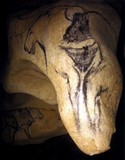
Chauvet Cave (Ardèche, southern France). Salle du Fond (the last and deepest of the chambers), nearly 7m high. A vertical cone of limestone hangs down ending in a point 1.10m off the floor. The Venus (pubic triangle) and the Sorcerer (man-bison) are drawn in black charcoal.
Evidence suggests that the Venus is Aurignacian created in the first period of the decoration of the Cave (ca 32 to 30 kya). The ‘Bull-Vulva’ motif led Curtis (2006) to interpret this composite drawing as the representation of the ‘Minotaur’
According to another etymological interpretation, the word comes from the Latin labus = lips, connecting directly, thus, the double-axe to the feminine sexual organ. Waits, in 1923, was the first to argue that the symbol stood primarly and entirely for the Mother Goddess; later on Gimbutas (2001, p. 35) promoted an idea first suggested by the artist Dorothy Cameron, that the symbol of the bull bucranium, which is common in Neolithic art, represented a womb and fallopian tubes. The physical shape of the female vagina is similar to the shape of a bull's head indeed. Noteworthy also is the fact that the word ‘labyrinthos’ is used in the southern areas of Crete as a female gender name. The double triangle labrys symbol, found already in paleolithic cave art (e.g. see Baring & Cashford, 2005: Magdalenian Niaux cave paintings), in Neolithic Halaf Culture motifs and religious rites (Eliade, 2006; MacGillivray, 2012), in a Sumerian hymn of the 3rd millennium BCE that mentions the sacred marriage between Iddin-Dagan, the third king of the dynasty of Isin, and Inanna (Reisman, 1973) or in Aphrodisias-Caria bronze Hellenistic coinage (http://www. asiaminorcoins.com/gallery/displayimage.php?album=196&pid=4269#tp_display_media), was used up until medieval times to denote the womb and the female reproductive power.
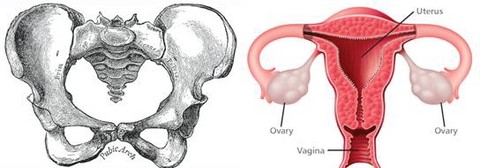
Left: Female pelvis. Right: Female reproductive organs.
Both resemble to butterfly / double-axes images. Image synthesis by Amanda Laoupi
Thus, the author estimates that the labrys was mainly a Moon/Venus symbol, representing both the female elements of chthonic prehistoric cults of the Great Mother Goddess, and the destructive powers of cosmic and natural phenomena, later transformed into a dual archetype like the ankh, symbolizing the wholeness of the Cosmos and of human nature (Nikolaidou, 1994: symbol of dualities like male/female, nature/culture, Earth/Sky).
On the other hand, the author agrees with the amazing hypothesis which has been made by Henriksson and Blomberg (2011, p. 65) naming Orion/Sirius as the Minoan constellation of the Double-Axe! This fact could explain the strong correlation of the Moon/Venus with Sirius.
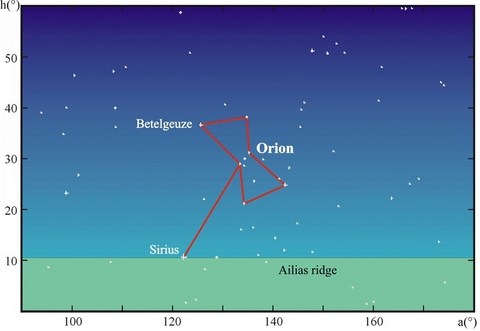
The hypothesized Minoan double axe on 21 September 2000 BCE, at 23.23 local mean solar time,
at Knossos, when Sirius became visible above the Ailias ridge. The center of the door of the Central Palace Sanctuary is at azimuth 100° (http://minoanastronomy.mikrob.com/ fig. 5).
After Henriksson and Blomberg, 2011, p. 65
The double-axe was, also, correlated with the ‘horns of consecration’, often being the symbol of Poseidon, the ‘Earth-Shaker’ or of Zeus with his thunderbolts (Evans, 1901, p. 107; Castleden, 1990, p. 130, pp. 135-136; Haysom, 2010). Moreover, in the ancient Anatolian and Mesopotamian myths, the great goddess had a male companion in the form of a tree or a bull, e.g. Kybele-Attis, Ishtar-Tammuz, Aphrodite-Adonis (Evans, 1901; Nilsson, 1950, pp. 400-404 and Figs. 56, 61, 71-73). This youthful god was also depicted with goddesses on the tree-shrine scenes of Minoan seals, having a central position in the Minoan religion as a male fertility god, a ‘Year-Spirit’ (Castleden 1995, pp. 125-26). The sacred tree, the sacred bull, the young male ‘Year-Spirit’ were part of a general symbolism. Thus, according to one version of symbolic decipherment, the Cretan Dionysos/Adonis, the Minoan & Mycenaean Poseidon/Poteidan, and the deity of double axes may all have been expressions of the same Minoan god, who could have been the male partner of a Minoan female solar deity (Evans, 1901, p. 168; Evans, 1930, pp. 457-458; Castleden, 1990, p. 129). On the other hand, the priests at Delphi were called ‘labryades’. Other researchers (Cook, 1914; MacGillivray, 2004, p. 332) interpret the double-axe as the symbolic marriage of solar and lunar calendars, which produce Asterios (the knowledge of the starry sky’s periodicities).
Moreover, the Latin word dolabra (labrys), meaning axe or hoe, used in Minoan Crete, Lydia and Etruria, also symbolized lightning, being an ‘ar falando’, meaning a sky fire (Blinkeberg, 1911; de Grazia, 2005). The double-axe accompanied the Hurrian god of sky and storm, Teshub (Tarhun in Hittite and Luwian).
In parallel, the cult of Hephaistos (the authentic constructor of the Minoan labyrinth) was ‘Pelasgian’ beyond any doubt. According to Herodotus (VI.140.1 ), the ‘pre-Greek’ population of Lemnos island was Pelasgian, as was the population of the Greek mainland before the flood of Deucalion (Thucydides, I.3.2: The Nation of the Pelasgians). One must not forget also that Hephaistos was symbolically removed from the community, spending nine years in the depth of the sea, as a rite of passage. That dive into the ocean can be conceived as a return to the unconscious, and as a prelude to rebirth, since rebirth is one of the main symbolic features of the Labyrinth (Jung, 1984).
On the other hand, the Etruscans, said by Herodotus (I.94) to be Anatolian Lydians arrived to Etruria before the Trojan War, were especially worshippers of Jupiter and of lightning of all forms (at least 30), due to a very consistent fear of lightning. Lightning prefers damp areas, underground waters, towers and hilltops, metallic substances and objects in the soil. In Etruscan mythology, Techulka, a smith-god and death-demon, clubbed his victims with a giant hammer, accompanied by a winged demon figured with snakes.
The Tarquin family of Italy, before the foundation of the Roman republic, had as its emblem the minotaur, as is confirmed by the archaeological finds in the remains of an ancient palace found in a volcanic crater 12 miles outside of Rome, in Gabii (it likely belonged to the Etruscan prince Sextus Tarquinius, the last tyrant king of Rome) dating back to the 6th century BCE. The Minotaur was also one of the five legionary emblems before Marius’ reform (Pliny, Historia Naturalis 10.16; Downey, 1996; Avramidou, 2011).
The ancient Etruscii, who were called by the Greeks Tursanoi, Tursenoi, Turrenoi, and by the Romans Etrusci and Tusci, were people of Pelasgian origin (Hellanicus, fragm. 1 in Fragm. Hist. Gr.I.p.44). Even if the Etruscans were called Romans (Flavius Josephus, Against Apion II. 4), exactly like the ancient inhabitants of Iberia (Hispania) and like the Sabinii, their ancestors were the Arimi, Aramani and Arimani. Rome itself had been at the beginning an Etruscan city (Dionysius Halicarnasseus, I. 29). The famous river Tiber (aka Rumon) is considered to be an Etruscan river (Virgil, Aeniad VII. v. 242; Georgics I.499). In the area of Vulci, the river was called Armina or Armine. According to Roman tradition, Romulus had been an Etruscan imperor (Servius, in Virgil Georgics II.530). Two ancient Greek writers state that a significant group of Pelasgian Turseni still existed around 435-400 BCE in the peninsula of Mount Athos (Herodotus, I.57; Thucydides, IV.109). According to legend, Orpheus spent some time among a group of people of Getic origin, named Trausi, dwelling in the central regions of the Rhodope Mountains (Livy, XXXVIII.41.6). In Hecateus’ geography, the Trizii were people from the southern parts of the Istru (Stephanus Byzantius s.v. Trisoi). Furthermore, remains of an ancient Pelasgian population which belonged to the family of the Tursenii were found in Attica, in Argos and in Lemnos, (Thucydides, IV. 109; Dionysius of Halicarnassus, I.25). In the Homeric Hymn (VI.8) the Tursenii had as their main occupation the piracy in the Black Sea. Interesting information is also coming from Isidorus of Seville, who wrote that the Greeks and the Etruscii had been the first to write on waxed tablets (Origines, VI.9.1). Finally, the exact figure of the Cretan Labyrinth was carved on the rock entrance to the cave of the Cumaean Sibyl.
Additionally, recent investigations have shown that the Etruscans’ blood type is similar to the Urartu people of Lake Van in northeastern Anatolia (de Grazia, 2005). The genetic evidence shows that the Armenians (a separate ethnic group originating from Neolithic ethnic tribes, inhabiting a much larger territory than that of the present Republic of Armenia) are native to the lands inhabited by Urartians originating from the Caucasus and eastern Anatolia (Pallottino, 1958; Litvinov, et al., 2008; Wilhem, 2008; Ayvazyan, 2011; Pardo-Seco, et al., 2014).
Part (5)
To be continued
Bibliography
Read on-line
The Eternal Embrace
